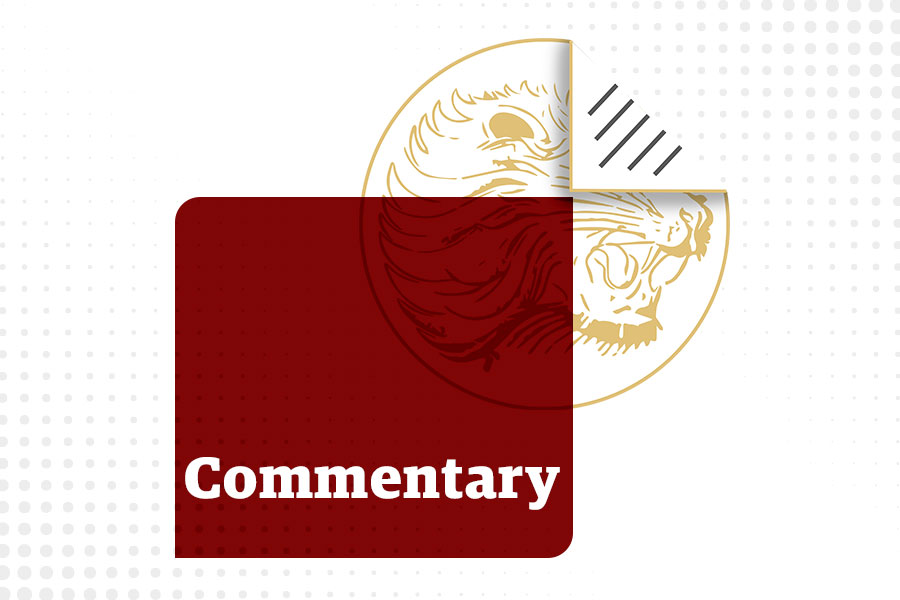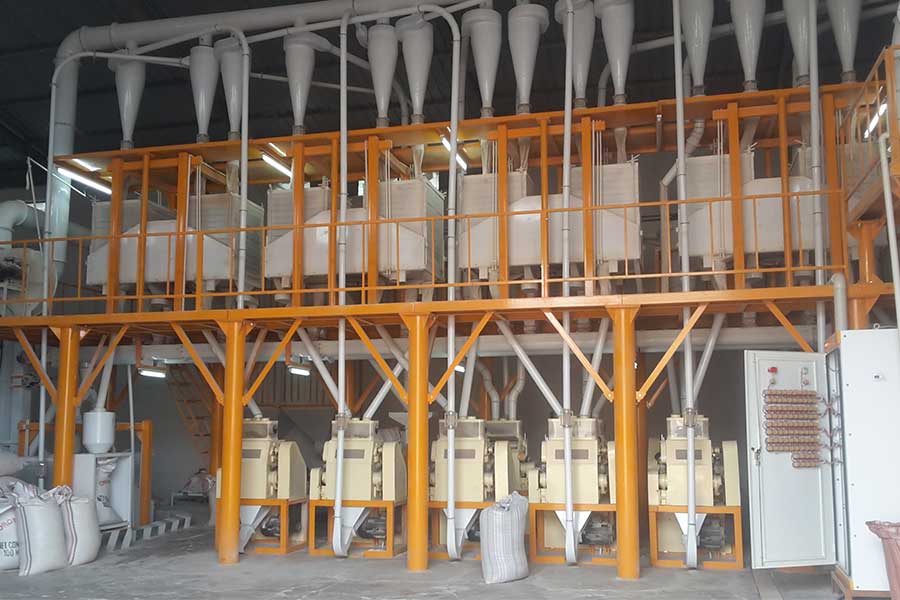
Commentaries | May 28,2022
Sep 26 , 2021
By Girma Mamo
The plan for food fortification by Ethiopia's government is not pragmatic. It does not consider the existing infrastructure, public awareness and the capacity of regulatory enforcement bodies, writes Girma Mamo (gmamo@blesslaboratory.com), CEO of Bless Agri Food Laboratory Service.
Ethiopia has developed a food fortification plan of action and a monitoring and evaluation framework to address diseases associated with malnutrition. Recently, the monitoring and evaluation framework was subjected to stakeholder review and feedback – a commendable gesture involving the private sector in this critical national agenda.
Before reflecting on the programme, what is food fortification?
It is a science used to enrich a food product by adding micronutrients that cannot be normally obtained. This is primarily intended to give appropriate nutritious food to those who are at risk of malnutrition.
The success of fortification programs can be measured through their public health impact and their sustainability. The latter implies an inter-sectoral approach where competent national public health authorities, research institutes, law enforcement, academia, non-governmental organisations, and the commercial sector are involved in the programme's planning and implementation.
Food fortification requires choosing the right vehicle to enrich the food product. This depends on different factors: vehicle to be easy for processing, its bioavailability (the vehicle absorption capacity of the micronutrient) and its affordability by the target group, to mention a few.
There are different standards locally and internationally that can be used for food fortification. It is, for instance, customary to fortify salt with iodine, wheat flour with zinc and iron, and edible oil with vitamin A and D. There are internationally registered pre-mixes with clearly defined contents in the markets to be sold for food fortification.
Food fortification has the dual advantage of delivering nutrients to large segments of the population without requiring radical changes in food consumption patterns. Fortification has been used to restore micronutrients lost by food processing and has been a significant contributor to reducing diseases associated with deficiencies in these micronutrients.
In Ethiopia, different studies have been conducted on the prevalence of malnutrition and associated health problems. This is not a surprise given that there are many health problems related to micronutrient deficiency prevalent in Ethiopia – goitre, anaemia, neural tube defect (NTD) and stunting. The prevalence of goitre and infant brain underdevelopment are the push factors for fortifying salt with iodine. Shortage of iron is attributed to anaemia in women that are of reproductive age. Therefore, fortifying wheat started to reduce the risk of anaemia. Zinc is needed for optimal child health and physical growth and normal pregnancy outcomes. Some studies have revealed that in rural areas, the deficiency of iron and zinc attributes to stunting.
The government has taken different measures to combat these health defects. The Food & Drug Authority (FDA) enhances its check of imported micronutrient pre-mixes used as input for food fortification, regulates the production and distribution of edible salt to be iodised, and supports food fortification practices. There were also different attempts in the food fortification venture by different actors in the field. There is also training on corn soya blend fortification and the provision of test kits for the factories to check the quality of their products.
Despite different attempts that have been carried out in the food fortification practice, it is only the addition of iodised salt that happens to be relatively effective. This is because there is a lack of clear data on the manufacturing companies that can be used for food fortification; no clear picture on the number of outlets that can assure the distributions to the target society; and a low level of awareness by producers to follow the responsible production process.
There is also limited knowledge on the conformity assessment business and accreditation; lack of mechanism and capacity to regulate the production and sales of fortified foods; and the general public mindset that only the government's intervention could be trusted, undermining the possible contributions of the private sector.
In the current food fortification monitoring programme, there is no clear distinction on the mandate of the actors. For example, the one for awareness creation and capacity building of the industries is not clearly given. Similarly, the FDA's role should be to regulate the fortification exercise throughout the country.
Despite the promotion of food fortification by local and international actors, it is not operated in a well-organised manner. Principally, the Ethiopian Public Health Institute (EPHI) is presumed to be in the driver's seat. Thus, as the food fortification intervention is not well steered by one responsible body with clear responsibilities and mandate, the EPHI should bring all actors together under one project to create synergy.
Remedying the lack of a database on potential manufacturing companies that can be considered for food fortification can also be a major step forward. Thorough assessment of the malnutrition prevalence attributed to deficiencies of micronutrients and the list of potential companies that can support the programme are very crucial for the effective implementation of food fortification practice in Ethiopia. This entails bringing all actors under one umbrella and having a national project steered by one responsible institution.
Currently, there is an effort to do the monitoring of the food fortification practice in an organised manner, with the EPHI, Ministry of Trade & Industry and the FDA being part of a national food fortification council.
No less important is to streamline the effort of all development partners involved in the food fortification exercise under one project by defining the technical part, the promotion and awareness role and the regulatory role. There is also a need to create awareness for the general public on the utilisation of fortified foods and industries on how delicate their operation is to meet its intended target.
Capacitating laboratories that prevail locally to do the quality verification task remains one of the crucial challenges; similarly, it is important to use private laboratories that can do the monitoring. The government can play a crucial role in capacitating industries that operate traditionally to the modern way of a production system.
Pre-implementation assessments on crucial implementing actors should not be given oversight. This is the regulatory body's capacity to regulate, the conformity assessment service providers ability to provide testing and inspection services, and the manufacturing industries capability to produce according to the set standards. Without a clear assessment of these issues, implementation of the Food Fortification project will not be efficient. A study on the prevalence of malnutrition in different regions and on the existing manufacturing industries and their capacity to do fortification is very crucial for the effective implementation of the project.
There should be a clear food fortification monitoring system. The role of each actor should be stipulated. This will help each actor see how they can cooperate with different actors to deliver what is expected.
As things stand now, the plans for food fortification are not pragmatic. It does not consider the existing infrastructure, public awareness and the capacity of regulatory enforcement bodies. A public-private partnership model to be implemented on pilot fortification programmes, where the experience can be scaled up.
There is also a need for the public sector officials to come out from the fog of believing only public sector intervention assures the effective implementation of the programme.
PUBLISHED ON
Sep 26,2021 [ VOL
22 , NO
1117]


Commentaries | May 28,2022

Fortune News | May 23,2020

Viewpoints | Sep 18,2021

View From Arada | Aug 03,2019

Commentaries | Dec 26,2020

Radar | May 14,2022

Commentaries | Aug 08,2020

Radar | Jul 17,2022

Radar | Jul 23,2022

Sunday with Eden | Aug 08,2020

Photo Gallery | 96440 Views | May 06,2019

Photo Gallery | 88694 Views | Apr 26,2019

My Opinion | 67092 Views | Aug 14,2021

Commentaries | 65737 Views | Oct 02,2021

Feb 24 , 2024 . By MUNIR SHEMSU
Abel Yeshitila, a real estate developer with a 12-year track record, finds himself unable to sell homes in his latest venture. Despite slash...

Feb 10 , 2024 . By MUNIR SHEMSU
In his last week's address to Parliament, Prime Minister Abiy Ahmed (PhD) painted a picture of an economy...

Jan 7 , 2024
In the realm of international finance and diplomacy, few cities hold the distinction that Addis Abeba doe...

Sep 30 , 2023 . By AKSAH ITALO
On a chilly morning outside Ke'Geberew Market, Yeshi Chane, a 35-year-old mother cradling her seven-month-old baby, stands amidst the throng...

Apr 20 , 2024
In a departure from its traditionally opaque practices, the National Bank of Ethiopia...

Apr 13 , 2024
In the hushed corridors of the legislative house on Lorenzo Te'azaz Road (Arat Kilo)...

Apr 6 , 2024
In a rather unsettling turn of events, the state-owned Commercial Bank of Ethiopia (C...

Mar 30 , 2024
Ethiopian authorities find themselves at a crossroads in the shadow of a global econo...

Apr 20 , 2024
Ethiopia's economic reform negotiations with the International Monetary Fund (IMF) are in their fourth round, taking place in Washington, D...

Apr 20 , 2024 . By BERSABEH GEBRE
An undercurrent of controversy surrounds the appointment of founding members of Amhara Bank after regulat...

An ambitious cooperative housing initiative designed to provide thousands with affordable homes is mired...

Apr 20 , 2024 . By AKSAH ITALO
Ethiopia's juice manufacturers confront formidable economic challenges following the reclassification of...